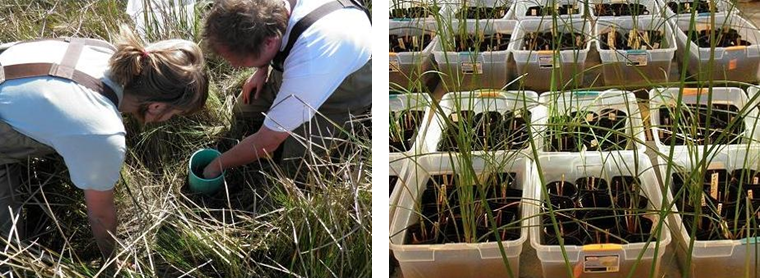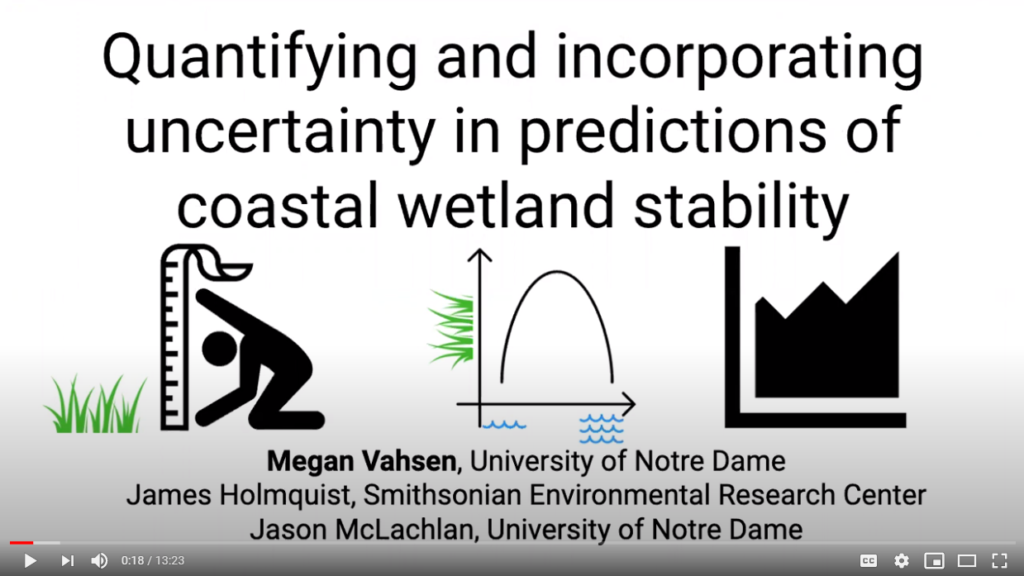
Coastal salt marshes around the world are being affected by climate change. Increased atmospheric CO2 leads to community composition shifts. Increased temperatures lead to higher sea levels and, consequently, increased salinity in coastal plant communities. Schoenoplectus americanus, a C3 sedge, is a dominant plant in these communities. We have found that populations of this plant from around the Atlantic and Gulf coasts are genetically, physiologically, and morphologically different from one another. Plants recovered from seed banks dating back over 100 years also differ phenotypically from modern plants. When used to parameterize mechanistic models of ecosystem state, these phenotypic differences are large enough to influence the carbon budget and the stability of marsh surface elevation.
Our lab uses Bayesian data assimilation to make joint inference about the ecosystem consequences of these evolutionary changes from the combined information of field measurements, controlled experiments, and mechanistic ecosystem models.
We received an NSF grant in summer 2017 to continue this project! This funding will be used to determine whether ecosystem processes that regulate surface elevation are shaped by heritable responses of S. americanus to salinity, inundation, and carbon availability.
For this project we are:
- Propagate and genotyping modern and “ancestral” cohorts of plants from seeds retrieved from Chesapeake Bay marsh sediment cores.
- Taking ecological interactions into consideration, we have and will continue to conduct fully crossed exposure experiments with contemporary and ancestral cohorts to measure heritable, non-heritable and environmental contributions to plant traits, growth, and surface elevation.
- We are assessing the aggregate importance of evolution to carbon and sediment accumulation (and allied processes) through a mechanistic model that accounts for data and model uncertainty. We will validate model predictions against independent estimates from sediment core profiles, and we will use a Bayesian assimilation framework to integrate all data streams (i.e., experiments, paleo observations, model predictions, prior studies) to determine the extent to which a century of evolution has affected Chesapeake Bay marshes, and how further data collection and model improvements might strengthen predictive forecasting.
Here is a recent talk that graduate student Megan Vahsen gave at ESA 2020 this year, https://youtu.be/KMhorX_Yw3o

